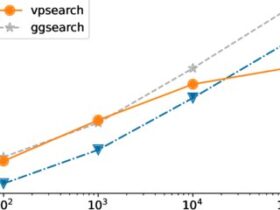Genetically modified foods are foods produced from organisms that have had changes introduced into their DNA using the methods of genetic engineering as opposed to traditional cross breeding. In the U.S., the Department of Agriculture (USDA) and the Food and Drug Administration (FDA) favor the use of the term genetic engineering over genetic modification as being more precise; the USDA defines genetic modification to include “genetic engineering or other more traditional methods”.
According to the World Health Organization, “genetically modified organisms (GMOs) can be defined as organisms (i.e. plants, animals or microorganisms) in which the genetic material (DNA) has been altered in a way that does not occur naturally by mating and/or natural recombination. The technology is often called ‘modern biotechnology’ or ‘gene technology’, sometimes also ‘recombinant DNA technology’ or ‘genetic engineering’. … Foods produced from or using GM organisms are often referred to as GM foods.”
1.1 Definition of Terms
Trait: This is a distinguishing quality or characteristic, typically one belonging to a person or to a particular crop.
Genetics: The word genetics stems from the ancient Greek γενετικός genetikos meaning “genitive”/”generative”, which in turn derives from γένεσις genesis meaning “origin”. Genetics is a branch of biology concerned with the study of genes, genetic variation, and heredity in organisms.
Transgenic Plants: Transgenic plants are the ones, whose DNA is modified using genetic engineering techniques. The aim is to introduce a new trait to the plant which does not occur naturally in the species. A transgenic plant contains a gene or genes that have been artificially inserted.
CHAPTER THREE: GENETICALLY ENGINEERED FOODS
Genetically modified foods (GM foods), also known as genetically engineered foods (GE foods), or bioengineered foods are foods produced from organisms that have had changes introduced into their DNA using the methods of genetic engineering. Genetic engineering techniques allow for the introduction of new traits as well as greater control over traits when compared to previous methods, such as selective breeding and mutation breeding.
Commercial sale of genetically modified foods began in 1994, when Calgene first marketed its unsuccessful Flavr Savr delayed-ripening tomato. Most food modifications have primarily focused on cash crops in high demand by farmers such as soybean, corn, canola, and cotton. Genetically modified crops have been engineered for resistance to pathogens and herbicides and for better nutrient profiles. GM livestock have been developed, although, as of November 2013, none were on the market.
There is a scientific consensus that currently available food derived from GM crops poses no greater risk to human health than conventional food, but that each GM food needs to be tested on a case-by-case basis before introduction. Nonetheless, members of the public are much less likely than scientists to perceive GM foods as safe. The legal and regulatory status of GM foods varies by country, with some nations banning or restricting them, and others permitting them with widely differing degrees of regulation.
However, there are ongoing public concerns related to food safety, regulation, labelling, environmental impact, research methods, and the fact that some GM seeds, along with all new plant varieties, are subject to plant breeders’ rights owned by corporations.
3.1 History of Food Genetic Engineering
3.2 Process
3.3 Types
CHAPTER FOUR: GENETICALLY ENGINEERED FOODS: PROS AND CONS
Last Updated 3 years












Leave a Reply